By Ian Wolverson and Esther Hamilton
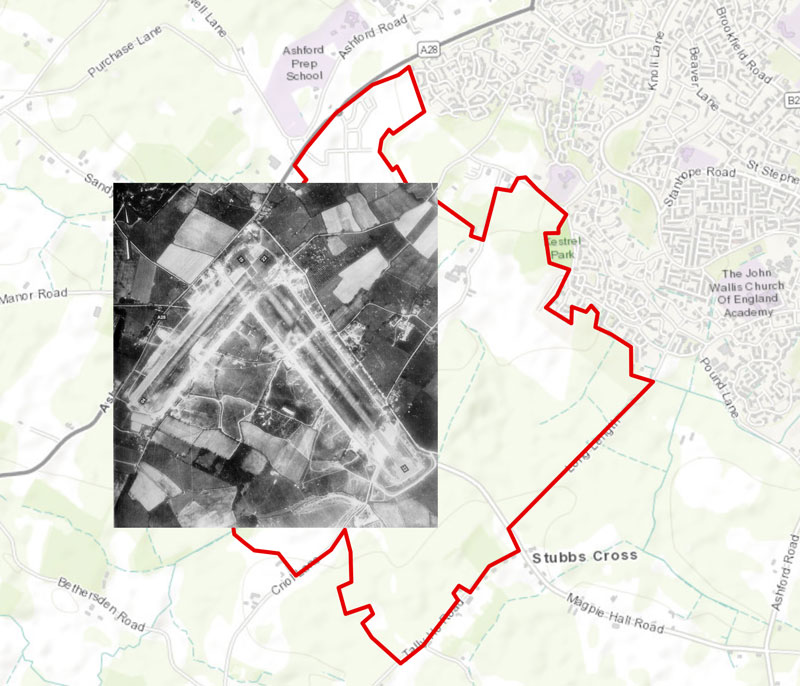
Once used as an airfield during World War II, the former site of RAF Ashford lies in the west of our Study Area (Fig 1). Although very little remains of the airfield, it was part of the immense efforts behind the success of Operation Overlord (the Allied liberation of Western Europe), which would launch two years after the foundation of the base.
The airfield was constructed in 1942, the peak year of Britain’s production of airfields, with 60,000 civilians employed nationwide towards RAF and USAAF airfield construction that year alone[i] (Fig. 2).
The site of the airfield at what is now Chilmington Green was chosen due in part to its proximity to the Ashford Railway Works (formerly the Locomotive Works), a major transportation construction and repair workshop, so key to the war effort that it became a Luftwaffe target[ii].
[i] Smith, D.J. (1989). Britain’s Military Airfields, 1939-45.
[ii] Lyne, R. M. (1982) ’The Military Railways of Kent, Part II’, Journal of the Railway & Canal Historical Society, vol. 5, pp. 110-119
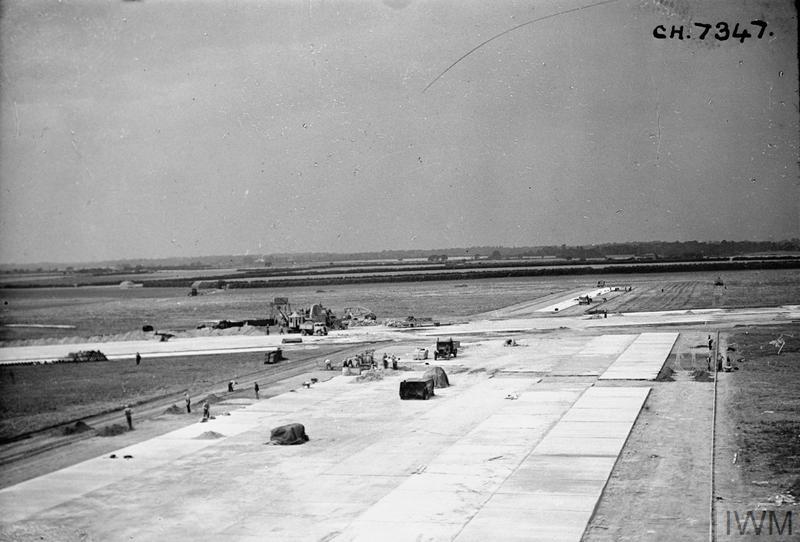
RAF Ashford, then known as simply as ‘ALG 417’, was one of many sites in Kent upon which purpose-built, bare-bones supply airfields were constructed, all of which would become temporary ‘launch-pads’ for Allied squadrons’ advance into Europe, hence their code name, ‘Advance Landing Grounds’, or ALGs. These ALGs were therefore built using military manpower alone, supplied in this case by a specialist RAF Airfield Construction Unit, with RAF Ashford being built by RAF 5003.i;[i] RAF Ashford was an example of one of many temporary landing grounds built in the Spring and Summer of 1943. Initially, the experimental surface of ‘Sommerfeld tracking’ was deployed to build the runway, which consisted of a lightweight, prefabricated surfaces that could essentially be ‘rolled out’ quickly.
Unfortunately, this format not very successful: Spitfires of the RAF stayed only a few days at RAF Ashford while Sommerfeld was still being used, as their undercarriages constantly collapsed on the uneven surface.i At all airbases, Sommerfeld surfaces were replaced with square mesh tracking (SMT) by spring 1944, which is what was sent by ship to France for operation Overlord
[i] Wegerski, E. & Mickwee, S. (1945) 514th Fighter Squadron, The Raider Squadron
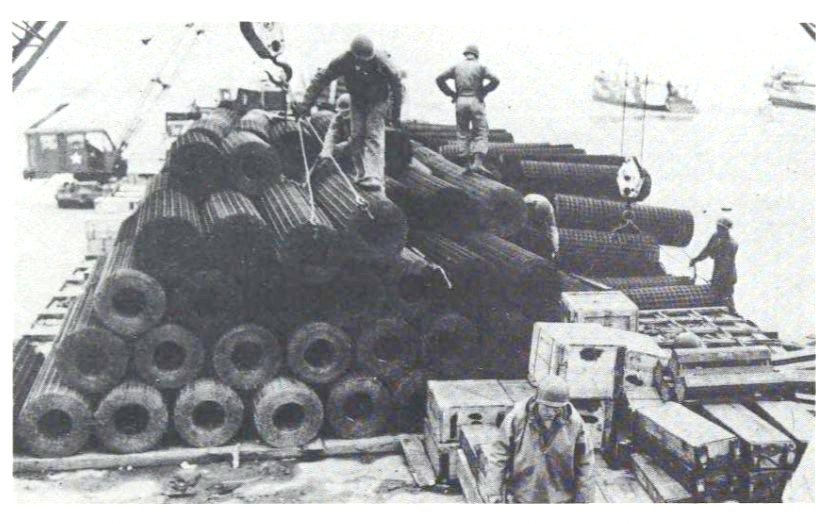
Members of the Royal Canadian Air Force were the first known users of the landing ground, in the northwest of the airfield, and were largely stationed in tented accommodation for the duration of their stay: pioneer living for pioneer airman (Figs. 4, 5, 6)!
Their tenure was short lived, but they were soon followed by the USAAF 406th fighter group, comprising the 512th, 513th and 514th Fighter Squadrons. The boys of the 406th were pleased with their new base, and their short commute of just ‘seven minutes flying time to the Nazis’.ii
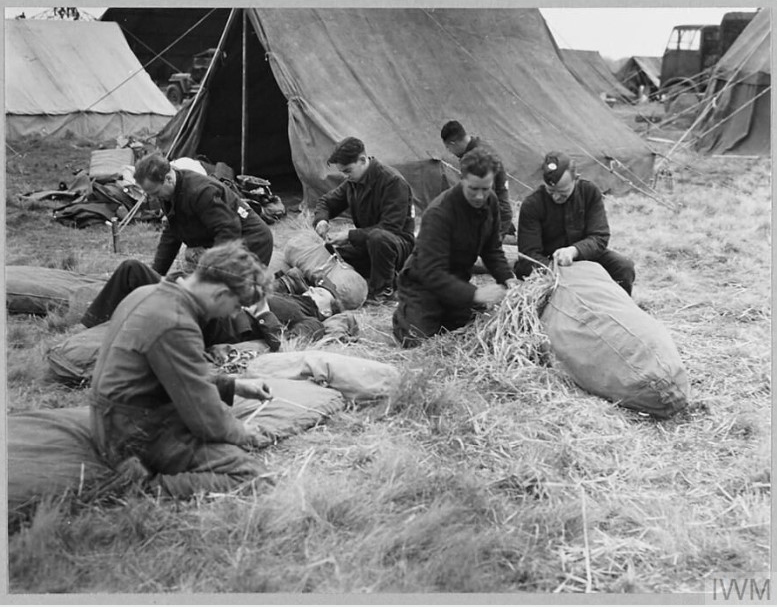
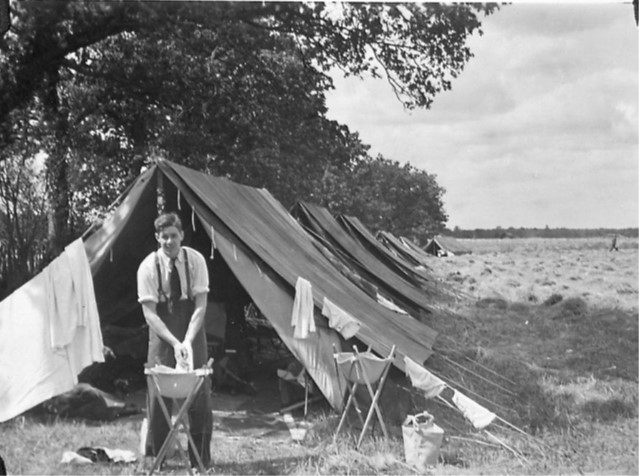
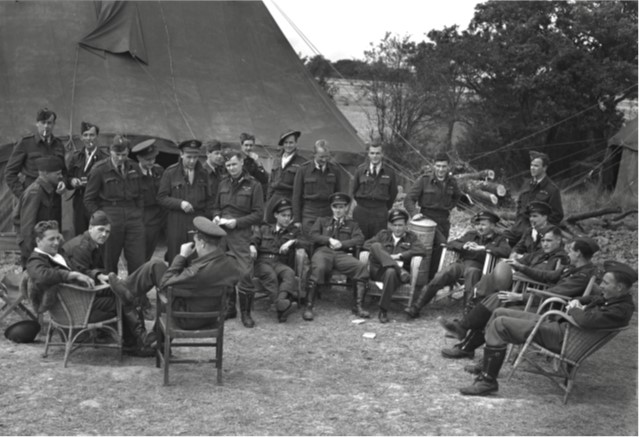
With the threat of Axis invasion and continued bombing ever present, preparations by those at ALG 417 to execute Operation Overlord intensified as 1943 progressed. By D-Day, June 1944, airfields in the southeast of England had become, according to an American pilot at the time “thicker than fleas on a dog’s back”i, and after months of operational training at Ashford, ALG 417 became one of ten ALG sites across the country from whence Allied air forces flew behind enemy lines to preplanned sites across France, Belgium, the Netherlands, and Germany. Allegedly inspired by Norman military strategy used during the Conquest of England in the 11th century, wherein the conquering army brought flat-pack fortresses with them to establish their armies once they landed ashore, these other sets of well-practised ALGs were planned to be built in the tow of the encroaching Allied land, sea, and air advance. i;[i]
By July 1944, after supplying and servicing the airships that aided in, among other successful operations, in the liberation of Europe, the 514th Fighter Squadron and the rest of the 406th Fighter Group left Ashford to support European ground operations more closely as allied troops moved further inland.
The rate of advance, and success of the ALG system that had been practised at RAF Ashford, was such that by September 1944 the tide had turned in the Allies’ favour and the site was returned to agricultural use. As early as 1947, an NLS aerial survey showed no trace of the former runway, however we will be uncovering hidden traces of the base in the landscape surrounding Chilmington as part of this project!
[i] Ramsey, W. (2017) Invasion Airfields: Then and Now
